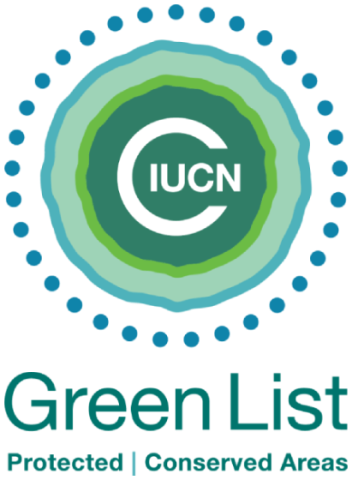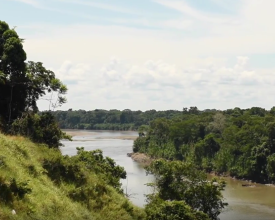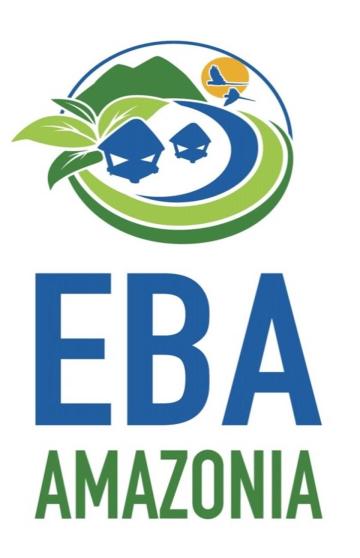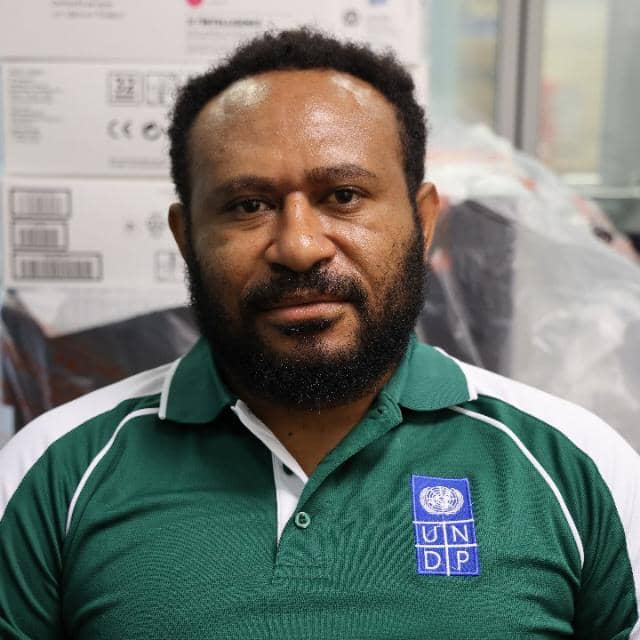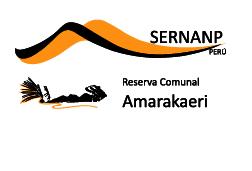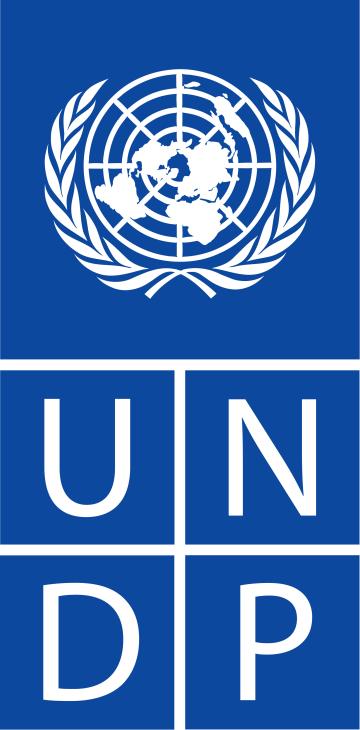
Forest conservation in the communities of Boca Isiriwe, Masenawa and Puerto Azul, Amarakaeri Communal Reserve

The Amarakaeri Communal Reserve was created by an initiative of 10 indigenous communities to conserve the multitude of ecosystem services like food, shelter, medicine and water. The reserve contributes to the protection of two watersheds. This ensures the stability of lands and forests, maintaining the quality and quantity of water for the development of native communities suffering increasingly from droughts and floods. The communities have included in their plans the use of Brazil nuts as a measure to generate economic resources.
Context
Challenges addressed
Addressing the impacts of climate change should not limit the choices that people have to seek personal and family development. The concept of "adaptation to climate change” is to adapt what one wants to do (in this case productive activities) to the current or expected changes. The challenges are:
- To gather the necessary information to adapt the productive activity to the future conditions.
- Replace, reduce or modify current livelihoods of the local populations (logging, mining).
- Clarify the relation between human habits and sustainable development (eradicate the idea that others are to blame).
Location
Process
Summary of the process
Building trust with the community and local partners (BB1) is a precondition for
- selecting the adaptation measures (BB2) and
- collecting information to adapt the productive activity according to ecological, social and climatic conditions (BB3) and
- implementing the conservation agreements (BB4) and
- enhancing transfer of knowledge to local governments and uptake of measures.
Building Blocks
Building trust with the community and local partners
The implementation of a new project requires the social acceptance of the local population. The objectives, strategies to be followed, the conceptual approach to implementation (in this case ecosystem-based adaptation to climate change) needs to be communicated and the communication and coordination mechanisms for the implementation need to be established.
The EbA Amazonia project, implemented jointly with SERNANP and ECAs (Ejecutor del Contrato de Administración de la Reserva / Executor of the Administrative Contract of the Communal Reserve) -representatives of communities - should present a united front with all the actors involved. So from the day that the communities entered, the project established concrete roles for all actors in the implementation of activities (e.g. SERNANP and ECAs). This generates a vision of unity and projection of activities beyond the life of the project (sustainability) since the SERNANP and ECAs are entities that perpetually interact with the local population.
Enabling factors
- Involve all project partners in each field visit according to their roles and responsibilities.
- Openness, honesty, accountability and punctuality.
- Acceptance of the project objectives by the local population.
- Clear and simple language and local language.
Lesson learned
- Always involve the local partners of the project - members of the ECA and SERNANP - this enhances trust and sustainability, beyond the life time of the project.
- To involve local governments from the inception of the project on.
- It is difficult to be on time with all the agreements made in a project that has many fronts of action (several activities at a time).
- It is difficult to be on time with activities involving institutions that have long administrative procedures (such as UNDP).
- It is difficult to communicate to the local population how complicated administrative procedures can be. According to the perception of the local population the project has funds and only needs to spend them.
Selection of adaptation measures
The process of selection of adaptation measures is one of the pillars of building block 1 (Building trust with the community and local partners), but is an important building block itself to be developed with the community. The approach that has been taken is to base the selection of measures on the local knowledge and preferences of the population. This means that they decide which activity (or activities) is / are the most appropriate for them. They have a sound knowledge of local reality in terms of opportunities and challenges and it is sufficient to ask guiding questions in order to determine with them the conditions to implement a certain adaptation measure. There are tools designed to do this such as the CARE “Climate Vulnerability and Capacity Analysis” and CRiSTAL (Toolkit for Integrating Climate Change Adaptation into Development Project).
Enabling factors
- Openness of the workshop facilitators to accept proposals and guide the population in their decision-making on adaptation measures to be implemented in the community.
- It is essential that workshop facilitators have knowledge in rural development, adaptation to climate change and facilitation techniques.
Lesson learned
There should be no technical barriers for a population or other agents of change to implement a productive activity as a measure of adaptation to climate change. The technical support that the project should provide is to search for all possible adaptation alternatives and to adapt the existing forms of production to the expected impacts according to the climate models.
Support information on how to adapt an activity according to ecological, social and climatic conditions (Brazil nut case)
The native communities of Boca Isiriwe, Masenawa and Puerto Azul decided to start using chestnut trees (Bertholletia excelsa) that existed within their territories despite having no prior experience in doing so commercially. The first requirement or condition that the EBA Amazonía project established was to exclude the possibility of contamination of the fruits with heavy metals. Samples of soil and fruits of the chestnut were taken. No significant residues could be found, in spite of the proximity of mining operations.
The project supported them as this activity suited well with the ecosystem approach assumed by the project.
A complete database of the occurrence and distribution of the species was created in order to model the changes that the species would suffer based on current and future climatic information. According to the modelling, chestnut will remain a species with a wide distribution throughout the area of the Amarakaeri Communal Reserve, with slight changes in its distribution. This way, the project responded to the local interest by providing the necessary information to guarantee a sustainable production process.
Enabling factors
- The EbA Amazonía project planned ahead for the provision of scientific information. The necessary resources and capacities to carry out the studies were available.
- Good knowledge of the forest resources: although the communities did not use the chestnut before, they knew that it existed and where it grows.
Lesson learned
- Human vulnerability (to climate change or other factors of change) is neither static, nor one-dimensional, nor uni-directional. It is multifaceted and can change rapidly with decision-making.
- On the other hand, analysing the vulnerability of a plant species (the chestnut in this case) is less complex and more reliable (less uncertainty) because it is only necessary to analyse biophysical variables and the variables of exposure to climate change or other factors of change.
- Using the results of the analysis is very helpful for the local population to determine their areas of interest for the protection of the chestnut which in turn can be destined for other uses of low ecological impact.
Conservation agreements
Conservation agreements are an integral part of the financial sustainability of measures to adapt to climate change and the spatial integrity of the communal reserves. By extending the areas of conservation and sustainable use of the resources of the communal reserve, they enable the use of the communal territory while at the same time allowing for a use of the adjacent natural protected area.
The conservation agreements contribute to the harmonization of management and planning of the communal territory by consolidating the permitted uses for their areas in a contract with the relevant authorities (ECAs and headquarters of national protected areas). In return, the communities gain key allies to continue obtaining technical and financial support to expand productive activities (adaptation measures) that were initially supported by the EbA Amazonía project.
Enabling factors
- Adaptive measures in implementation or design phase.
- Public financing mechanisms identified and available.
- Authorities committed to the local population.
Lesson learned
The generation of conservation agreements should have been initiated from the beginning of the design and construction of adaptation measures as a basic requirement.
Transfer of knowledge to local governments and uptake of measures
Cooperation projects such as EbA Amazonia are development agents that come and go. In contrast, state institutions, whether national, regional or local, are permanent with the main objective to ensure the welfare of communities in a specific area. Local governments operate close to the rural population.
Capacity transfer is another important issue from the point of view of the project.
To make the development approach of the municipalities compatible with the conservation approach of a protected area is fundamental in order to gain allies for the conservation of an area and the development of the surrounding population. This relates to building block 4 - the generation of conservation agreements between a community and their strategic allies form a solid base to channel support from the local governments in the development and implementation of adaptation measures. At the same time, information and training on how to access the state's public investment system for the local governments broadens their capacity to serve the local population and to access different funding sources.
Enabling factors
- Information on and access to public investment and rural support programs.
- Having capacities for political dialogue.
Lesson learned
- Involve the local governments from the start.
- Map and locate the adaptation measures according to each type of public rural and financial support program.
Impacts
- Valuation of a non-timber forest product: The marketing of chestnuts is an excellent alternative which contributes to forest protection, climate change mitigation and the provision of multiple ecosystem services. The community Boca Isiriwe asked the National Service of Natural Areas Protected by the State (Servicio Nacional de Áreas Naturales Protegidas por el Estado – SERNANP) to develop this activity as an alternative to illegal logging, allowing them to generate income. The EbA Amazonía project initiated the communications with the communities in order to carry out trainings in sustainable nut harvesting techniques, so that they can be included in the community life plan and the reserve´s master plan. There was increasing involvement of the community members – starting with few partners, currently the initiative has 36 partners.
- Increase of income for the local population: This solution responds to the economic need of the communities to search for other forms of income compatible with the Reserve, that allows them to satisfy basic educational needs of their children.
- Valuation of the forest and its goods and services: The main result of the use of Brazil nuts is that it is profitable because the cost of production is less than the selling price in an approximate cost / benefit ratio of 2/3.
- Social organization for land planning.
Beneficiaries
Direct: Native communities of Masenawa, Boca Isiriwe and Puerto Azul - 36 indigenous communities
Indirect: Native communities of San Jose del Karene, Puerto Luz, Barranco Chico, Diamante, Shipetiari, Shintuya and Queros - 1716 community members.
Sustainable Development Goals
Story
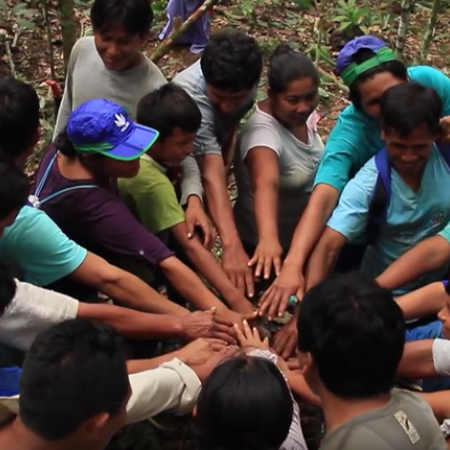
The Amarakaeri Communal Reserve was created on the initiative of 10 indigenous communities to conserve their ancestral territory and the multitude of services such as food, shelter, medicine and water. Its establishment seeks to contribute to the protection of the Madre de Dios and Colorado river basins in order to ensure the stability of lands and forests to maintain water quality and quantity, ecological balance and an adequate environment for the development of the Harakmbut native communities. Three of these communities, which suffer most from droughts and floods, have included for the first time the use of Chestnut (Bertholetia excelsa) as a measure to obtain economic income, diversify sources of income and protect natural resources in their life plans. The overall objective of the EbA Amazonia project – which is co-managed by SERNANP, ECA-AMARAKAERI and UNDP – is: To reduce vulnerability of indigenous communities to climate change, increasing their adaptive capacity through the incorporation of community-based adaptation (CbA) and ecosystems-based strategies in the sustainable management of community reserves. This will contribute to the sustainable livelihoods of these indigenous communities and will ensure the conservation of approximately 500.000 hectares of high conservation value forest. Before the use of chestnut was introduced to the three communities there had been a conflict between the Boca Isiriwe community and the reserve management because of illegal logging within the Amarakaeri Communal Reserve.
In the light of this situation, the community requested SERNANP to support the development of alternative economic activities which would allow the communities to generate income for their families. In this sense, the reserve management proposed the use of the chestnut on their communal lands and in the future in the Amarakaeri Communal Reserve. The project initiated the communications and coordination with the communities to train them in techniques of sustainable harvesting of chestnuts so that they can be included in both the community life plan and the reserve´s master plan. The process began in 2014. During this short period of time the community members have become gradually involved, with growing confidence in the proposal and in the project representatives. It started with one member per community and up to the moment there are already 36 members from three different communities.
